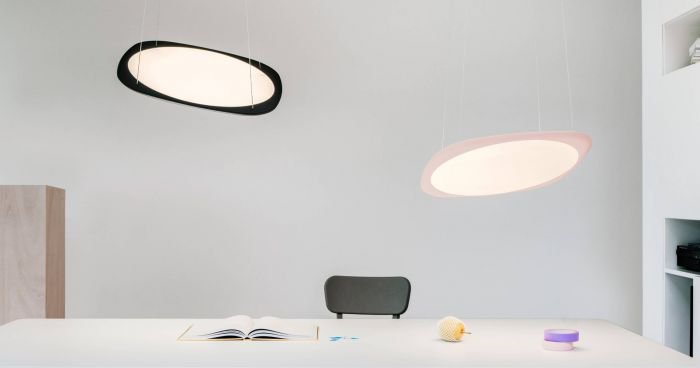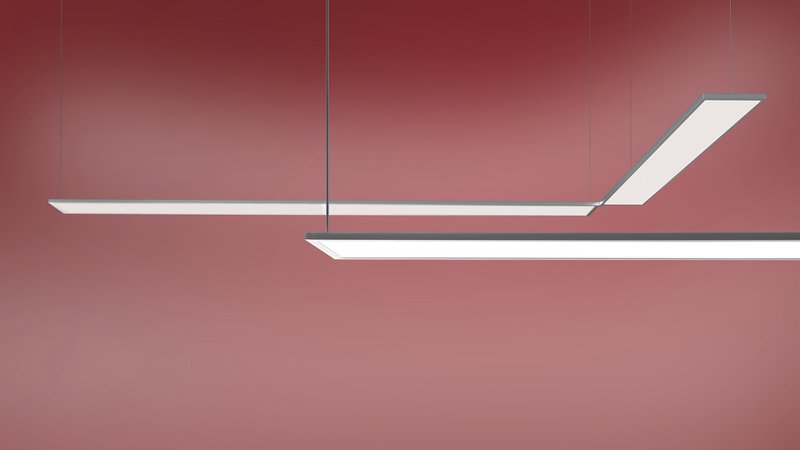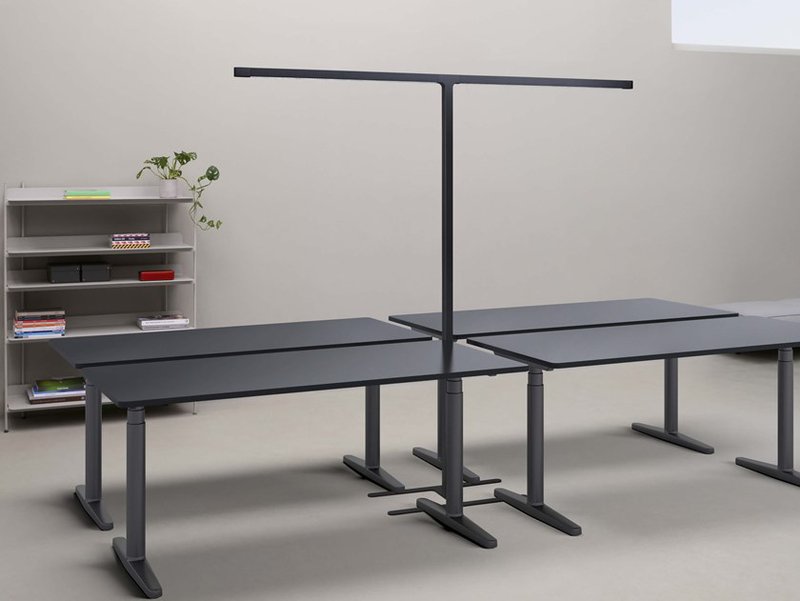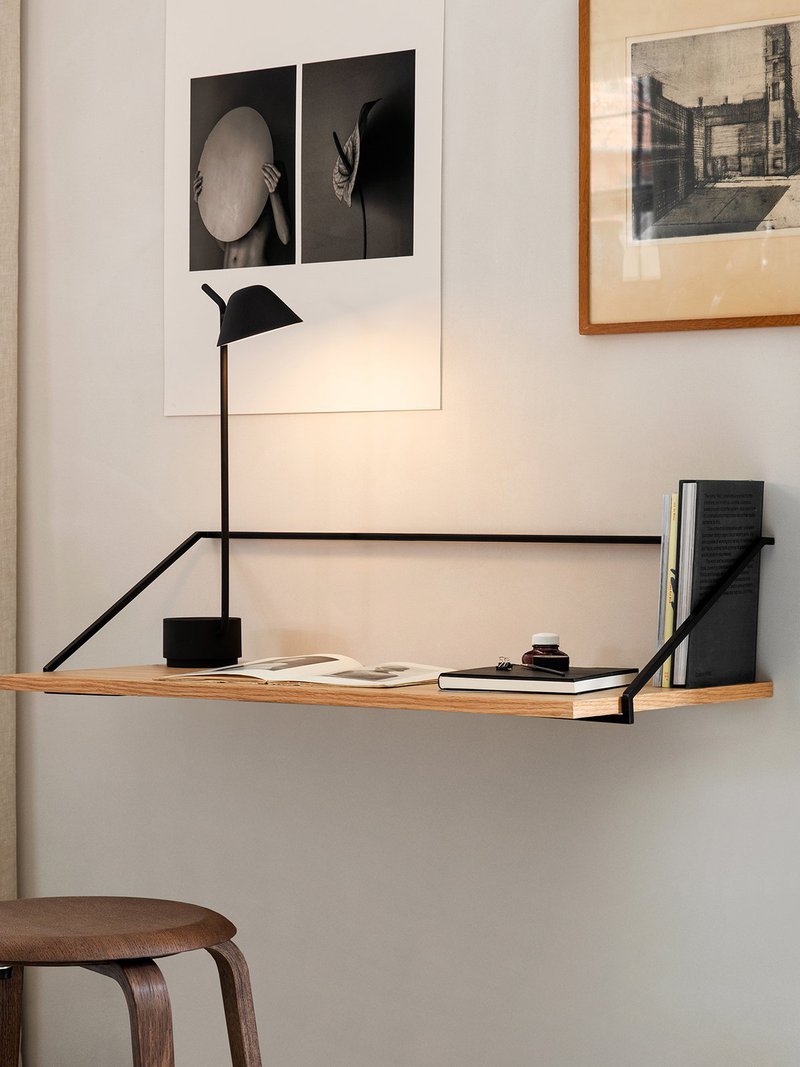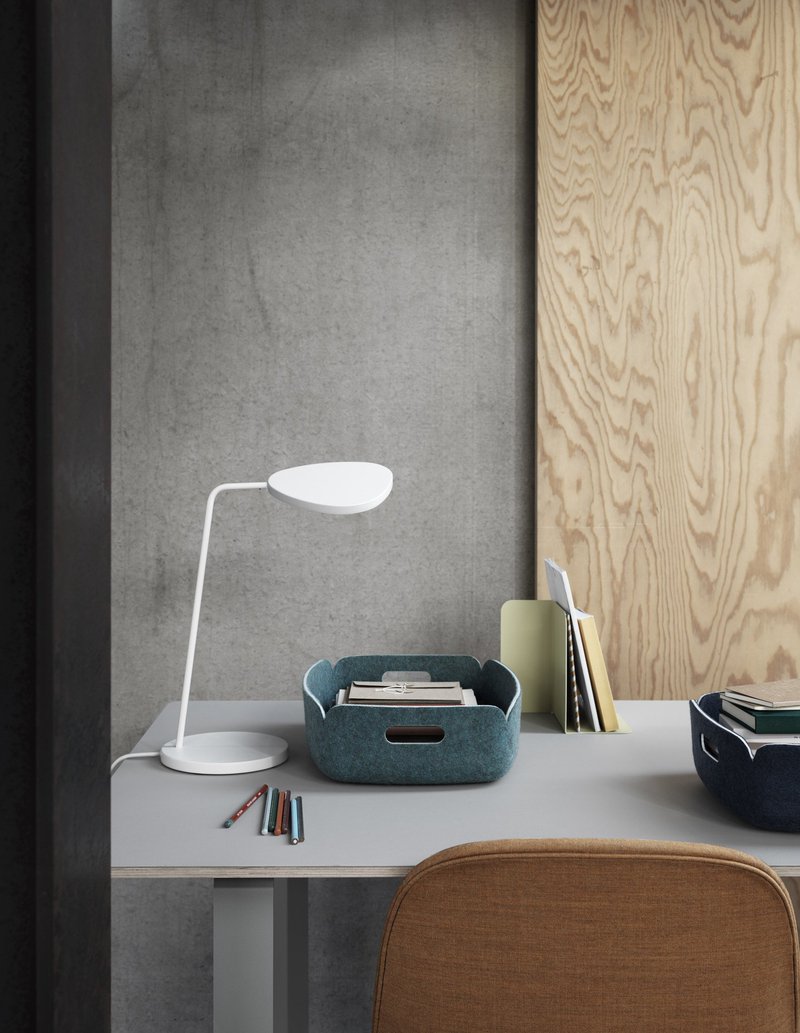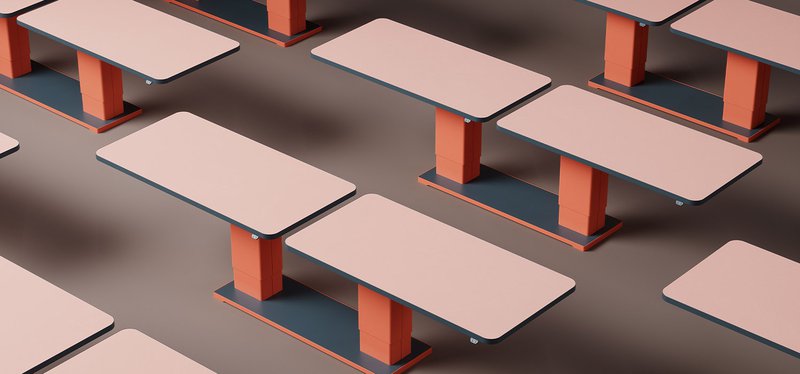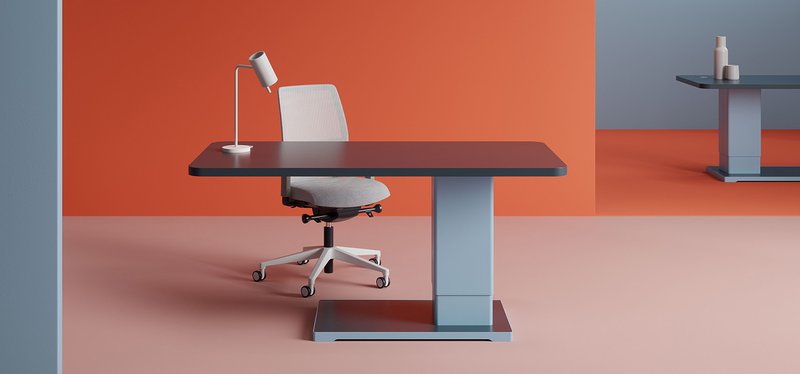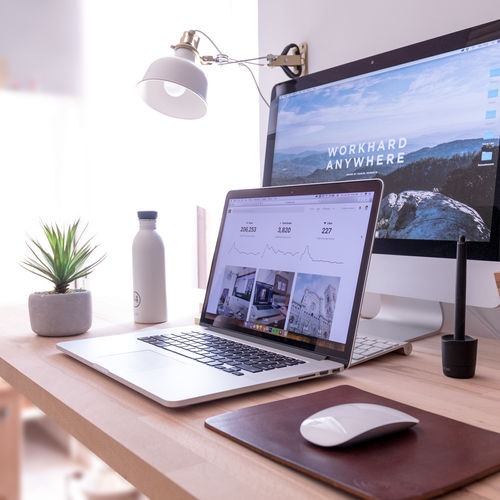How do you create an atmospheric and productive work environment with the right office furniture?
How do you create an atmospheric and productive work environment with the right office furniture?
Setting up your new office: these days it's much more than filling an empty space with nice office furniture. As a business owner, you want to create a flexible work environment that reflects a combination of home and office work, and the changing demands for the modern office. After all, how do you incorporate social distancing, for example, without negatively impacting the productivity and well-being of your employees?
Setting up an office where you give the right office furniture the right place is more important than ever. So in this blog, we share a range of tips: from a clear office plan to the best ergonomic office chairs and multifunctional office furniture with a sleek design.
Navigate quickly to the right topic
- Office furniture: inspiration
- What do you need to look for when buying office furniture?
- Our tips for an atmospheric office design
- Looking for personalised advice for your office design?
Office furniture: inspiration
Despite the fact that offices at home are the new normal, the work office continues to play an important role in our professional lives. Not only is it the perfect place to collaborate and meet other people, it is also your company's calling card. With your choice of quality office furniture, you influence that important first impression, while providing a nice environment for your employees. So it is worthwhile investing in the right office furniture, for these four reasons:
1. Workplace branding: show the identity of your company
Logo? Check! House style? Check! Photography? Check! Lettering? Check! Then we're done, right? Think again. When (re)branding a company, the office design is often overlooked or put off until later. That's a shame, because your office furniture and the layout of your office are part of your image.
From an average white box to a kaleidoscope of colours. "Show me your office design and I'll tell you who you are as a company." It could be a successful television format. Although the interior of an office is also subject to trends, it is important that you don't follow them blindly, but make conscious choices according to your vision. Some trends we see today: the hybrid office set up like a home, a biophilic interior where aspects of nature are brought indoors, a flexible way of working with flex desks and mobile desks on wheels, a focus on sustainability that translates into recycled materials and circular office furniture … But what is important for you as a company and for your employees? And what do you want to radiate?
For example, are you a creative agency known for its clever approaches and humorous campaigns for major brands? Then you want your interior to exude a positive vibe and come across as professional. Design accessories with organic shapes, sofas with flowing lines and rounded side tables, poufs and stools ensure that your office decor definitely doesn't feel angular and delineated. With designer office furniture, you convey a creative message, and this can obviously be done in fresh or surprising colours. A meeting room with Vitra Aluminium Chairs EA in various colours immediately sets the tone for the brainstorming or meeting.
Your corporate culture and office design are inextricably linked because the physical space conveys your company's values and branding. If the two are not in alignment, it can lead to frustration for your employees and confusion for your customers. However, if your office design is in line with your company's image and values, your employees will be more likely to adopt and radiate it, because they are in it all day.
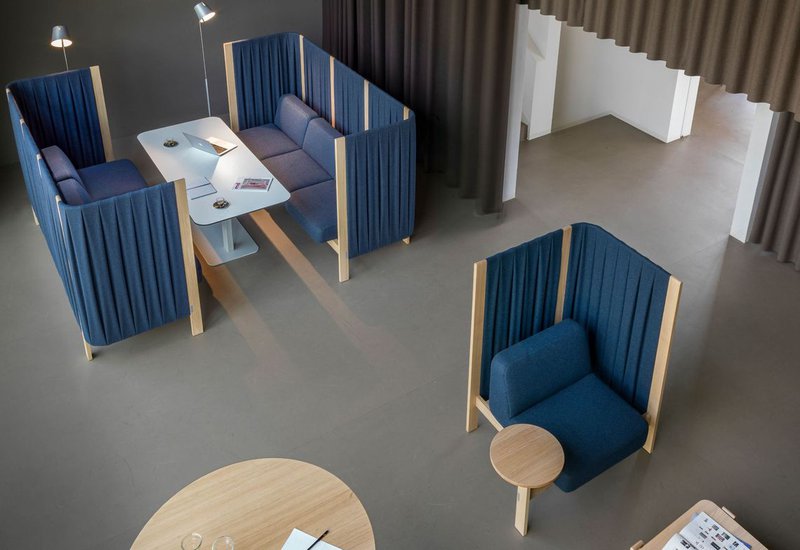
2. Happy employees: how your office affects their well-being
We are increasingly moving toward a hybrid office environment that combines teleworking and office work. But that doesn't mean you no longer have to invest in your office design, on the contrary.
"By investing in a quality and human work environment, you show your employees that you are investing in them".
For some employees, the office will become a meeting place where they co-create with others. Do they need to focus on an individual task? Then they prefer to work from their office at home. Conversely, others prefer to come to the office every day, because they cannot concentrate at home or the atmosphere in the office motivates them.
Landscape offices or open-plan offices were long seen as the modern way of working. Unfortunately, the dynamism they create comes with a lot of background noise which has a negative effect on employee productivity and well-being. Therefore, be sure to provide plenty of rest areas where people (who come to the office every day) can work in silence and with focus. Install acoustic meeting hubs or benches with high partitions. These offer your employees all the privacy they need for a one-on-one conversation or if they want to find a silent spot.
The Moi collection by Vepa, for example, is a complete modular and sustainable range of sofas, privacy screens and lounge elements that make it very easy to create private seating areas. The Re-felt filling they use has outstanding sound absorbing properties and is made from residual materials from the company's own fabric department and recycled industrial clothing.
When designing your office, keep in mind the different needs within your team. Ask them about their ideal work environment and create an atmospheric office that is conducive to both productivity and spontaneous interaction.
Ergonomics is also essential for the well-being of your employees. Did you know that people who work a desk job spend an average of six hours a day on their office chair? A good ergonomic office chair is therefore no unnecessary luxury. Make sure your employees know how to adjust their office chair to optimise the support it provides. The best ergonomic office chairs are height-adjustable and have armrests that you can adjust. Ask for a brief explanation when they get delivered, so you know all the features.
3. Enhanced productivity: functional office furniture for daily comfort
When planning your office design, think carefully about how a given space will be used and what requirements your office furniture should meet. Because that specific ergonomic office chair, which facilitates the perfect sitting posture, is just the start.
Today, there is a wide selection of functional office furniture. Just think of acoustic seating with sound dampening properties such as the Alcove Sofas, Velum or Cloud. And the height-adjustable desks from Mooze. Mobile multifunctional wall elements such as the Dancing Wall by Vitra, on the other hand, offer complete freedom to set up your office according to the needs of the moment. Vitra doesn't shy away from giving existing classics a modern upgrade, so that they stand the test of time. For example, the Eames Tables were recently updated with new power and network extensions and options for wireless charging.
Difficult to make a choice? Following an in-depth exploratory discussion, we take away all the hassle in this regard. Indeed, our professionals will guide you step by step from vague idea to concrete plan tailored to your needs and budget. That way, your office design doesn't become yet another task that lands in your in-tray as a business owner.
4. Optimal lifespan: choose carefully to enjoy many years of use
More and more companies are focusing on sustainability. And we can only applaud that. By investing in design classics and designer office furniture of exceptional quality and timeless appeal, you avoid having to replace your office furniture after only a few years. And you end up spending more money than if you had invested in quality in the first place. In the long run, quality office furniture is therefore more economical and sustainable than cheaper alternatives. Thanks to their longevity, brands like Vitra can also offer multi-year warranties, sometimes up to 30 years.
In addition to longevity, sustainability also translates into the selected materials and manufacture of the office furniture. In recent years, there has been a growing focus on circular design, which prioritises recovery, reuse, repurposing, recycling and biodegradability of the materials used. This is not just a trend, but an important step in the transition to a (more) circular economy.
One design brand with a strong focus on this with its (office) furniture is the Dutch company Vepa. The backrest of the Whale Tail Chair, for example, is made from 67 recycled PET bottles which they fish out of the canals in Amsterdam, together with Plastic Whale. And for their Hemp Fine chair collection, they work with bio-material consisting of hemp and resin. Both raw materials are completely organic, plant-based and recyclable. A unique application!
What do you need to look for when buying office furniture?
Buying office furniture can feel overwhelming, as there are so many factors to consider. How do you avoid having your office design not being in line with the image you want to project, nor fitting your way of working? First think carefully about your office plan, aesthetics and budget.
1. First things first: draw out an office plan
Before the rise of the landscape office, many office designs followed a hierarchical structure and enclosed offices and cubicles were the norm. Simple and clear. Today, the organisation on the workfloor looks very different, and this requires flexibility.
An office plan will give you a good idea of the available space and how to fill it in different, specific ways. Before you start any sketches, measure all the rooms. On your floor plan, also draw all the windows and doors, and whether they open in or out. When drawing up the plan, keep in mind how people will circulate in the office. For example, don't place the convivial coffee corner in the middle of the rest areas where people want to focus on work.
How do you set up different teams in the same space? What do you need to look out for in an ergonomic workstation? How do you deal with the freedom offered by mobile multifunctional wall elements? How much space should you envisage for private and open workstations? How much storage space is needed? These are all questions that will determine your office plan, which you can't always answer. Or maybe you keep coming up with the same layout, but it doesn't feel right.
Our professionals will help you broaden your outlook, even for smaller areas. Thanks to their experience, they know exactly how to arrange an office efficiently, with attention to daily comfort. And how to create a pleasant atmosphere, for everyone. The clearer your office plan, the more focused you can be in purchasing office furniture and setting up your office.
2. Aesthetics: what does your office design say about your business?
As a business, what do you want your office design to convey? Think about this carefully before you start shopping and decorating. That way, you avoid a style that doesn't match the personality of your business, or which ends up being a mish-mash of on-trend items. Your choice of colours, designer office furniture and interior accessories, as well as attention to quality and sustainability, are part of your image. They are just as important as the other elements of your branding and communication. In other words, they influence how (potential) customers, partners and employees perceive your company.
Are you looking for inspiration? On both Pinterest and Instagram, you can create boards to collect your ideas. For every image you want to pin, ask yourself if it fits with your vision as a business leader.
A difficult exercise? Indeed, the endless stream of images and trends can sometimes feel overwhelming. In addition, what you find beautiful for your personal interior will not necessarily fit your business. To see the forest for the trees, our professionals are happy to help you translate your vision into a mood board of your dream office design.
3. Draw up a budget plan
Make a list of all the office furniture and other items you need and identify what is a priority. As a start-up, your budget and priority list look different than that of a multinational, and that's fine.
Perhaps a large proportion of your employees work from home several days a week as standard. Then it makes little sense to spend all your budget on an individual workstation for each employee. But keep in mind that as an employer, even for employees who work largely from home, you have a legal obligation to provide a safe and healthy workplace. Don't forget to draw up a loan agreement if you provide staff with an ergonomic office chair, a second screen and other office equipment.
An overview list ensures that you don't lose sight of your budget, and helps you make choices that are important to you. Is your office design an investment in your company image in the long term, or are you looking for a concrete, effective solution in the short term? How many years do you want your office furniture to last? Are you willing to pay more for sustainable and/or circular office furniture?
Remember that:
- sustainability comes with a price tag;
- the more features, the more expensive the office furniture;
- and premium finishes make the standard cost go up.
A priority list will help you work out your office design in stages. Rome wasn't built in a day. Moreover, it is also very satisfying as a company if you consciously save and invest in designer office furniture. That way, you see the office design evolving and you're not tempted to make impulse purchases.
Do you work with an interior design store or interior designer? Then communicate your budget openly and transparently. That way, you avoid designs and proposals for office furniture that are unaffordable. But you also avoid buying expensive things anyway and giving yourself less financial breathing space.
TIP: Do you need to make budget choices? Then save on non-essential items instead of quality ergonomic furniture.
Did you know that an office worker spends up to six hours a day sitting at an office chair? A sub-standard chair leads to back pain and perhaps even an employee being unable to come to work for a while. And this cost is much higher than the price tag of a good office chair.
Our tips for an atmospheric office design
Good office design not only looks nice, but meets the specific needs of your employees at all times. From lighting and colours to designer office furniture and ergonomic solutions, together they create an atmospheric workplace that inspires your employees and makes them happy and more productive.
1. Office lighting: for better focus and conviviality
Various requirements and guidelines have been laid down by the Federal Public Service Employment, Labour and Social Dialogue as regards lighting in the workplace. For example, in places where people do desk work or hold meetings, a minimum light intensity of 500 Lux is advised. The correct light intensity is important so your employees can work comfortably and not suffer from eye strain, but it also influences concentration and productivity.
At workstations and in meeting rooms, it is best to choose neutral or cool white light. In these areas, also choose diffused light, whereby the room is illuminated as evenly as possible and you avoid heavy shadows and shafts of light.
In relaxation areas for staff, it is best to choose light with a low colour temperature. The warm, yellowish glow creates an instant cozy atmosphere. That's important, because staff can't be expected to concentrate for eight straight hours a day. Choose an original luminaire here that catches the eye and radiates your company's style. Combine pendant lights with floor and table lamps for different moods and a homely touch.
A change of scenery can boost creativity. Or just help you see the question or problem on your to-do list in a different light. Make sure your employees can step away from their desks and brainstorm or think in a different environment. By playing with light within different office spaces, you create different moods and contribute to the productivity and well-being of your employees.
Some employees prefer to have a desk lamp so they can easily have extra light when needed. For example, when they have to read through a file, jot down thoughts on paper, go over job applications, etc. There is also a huge range of desk lamps to choose from these days: from simple modern designs to flexible models with large swivel angles and design classics.
Some of our favourites include Pad System, Super Line & Pro and the collection of Tobias Grau. The Pad System by Artimede is the result of an office lighting study on how functionality, quality and comfort is achieved through lighting. Pad system disrupts the traditional optical approaches (using reflectors & refractors) used in work environments and they use one of the world's thinnest technical office lighting systems.
Super Line & Pro at Flos also brings an efficient and delicate luminaire with a high technological level. It is made up of a beam that combines direct and indirect light and is held by two coaxial cables that provide support and the electrical wiring. Perfect for offices or other spots that require high lighting efficiency and comfort.
And then there is the complete office collection by Tobias Grau. Team one, two, four etc. indicates for how many people the collection has been put together. Fully synchronised with ambient brightness, occupancy and usage. Team has truly revolutionised the quality and aesthetics of sensor technology. But the Flying designs are also worth a mention. They have a light, original design, are ultra-thin and radiate a sumptuous amount of adjustable, non-glare light.
Are you building a new office or renovating an existing building? Then work out a lighting plan with your architect so that all the fixtures are installed in the right place from the start.
2. Colour in an office: it's possible!
Besides daylight, colours have an affect on our mood. However, most offices play it safe when it comes to colour. There's nothing wrong with a neutral colour palette, as the colour white does indeed make a room appear larger. White brings tranquillity and more light, but by consciously incorporating colour into your office design, you can create a positive mood and increase concentration and creativity. The colour does not necessarily have to be bold here, but can be incorporated more subtly in the office furniture and interior objects.
Every colour has a different effect. That's why it's smart to consider the function of each area and what tasks are performed there. When you think of colours for your office, yellow probably doesn't come to mind straight away. Nevertheless, this bright colour is a great choice, as yellow gives us energy, increases our self-confidence and provides a mental and creative boost.
Bright shades of orange and red also have the same effect, but, like yellow, can have the opposite effect if applied to too large an area. So choose desk accessories, wall cabinets and other designer office furniture in these uplifting colours. Or incorporate them with a fresh bouquet of flowers.
Within the colour palette, we are more likely to go for the calm blues and greens. Safe and popular choices, and with good reason! Blue ensures peace of mind and concentration, thereby boosting productivity. Green also brings peace and tranquillity, but also fosters creativity and subconsciously makes you feel like you are in nature.
These colours can definitely be used on walls and in your office furniture, but green is also easily created by using plants. Not only beautiful and convivial, they also purify the air. A win-win, because office air quality is an important consideration these days. Computers, printers and copiers create a lot of small dust particles, while air conditioning and heating make the air dry. Plants absorb CO2 and convert it to oxygen, while neutralising the small harmful particles. And … did you know that they also absorb sound waves? Ideal to help reduce reverberation and noise. Don't forget to water them regularly.
3. Choose character
Your choice of materials, colours and designer office furniture reveals your business' character. Therefore, when putting together your office decor, pay attention to the details, design language and texture of office furniture and other interior objects.
A dining chair such as the Nerd Chair by Muuto looks clean and simple at first glance, but conveys a special aesthetic story with its unique design language. As such, it immediately adds radiance to the communal dining area.
Textiles also determine the character of your office to a large extent, but unfortunately are still too often overlooked. From long, semi-transparent curtains to pillows in different thicknesses and shapes. A carpet also clearly has its place in an office environment. But pay attention to the pile height here:
- High-pile carpets are wonderfully soft, offer the most comfort and have a relaxed and warm feel. But beware: for employees with dust mite allergies or asthma, high-pile carpets are not ideal.
- Low-pile carpets are strong and ideal for more intensive use. They have a flatter surface which makes them easy to clean and less dust gets stuck in them.
Last but not least, interior objects convey more than you think. For a meeting with clients, for example, place a nice carafe filled with water and lime or cucumber on the table instead of a bottle of water from the supermarket. Not only does it look nicer, it also shows that you are water-conscious and avoid bottled water. But also items such as clothes racks, vases, magazine racks, storage boxes and baskets, wall shelves … create an office design with character.
4. Classics, with good reason
Every design brand has its classics. Whether you are starting your own business or about to pass on the torch: that piece of furniture that is a major part of design history has surely caught your eye.
The EA 117, EA 118 and EA 119 models in the Aluminium Group by Charles and Ray Eames, for example, have been classics in office environments for decades, and with good reason. They add an iconic touch and score highly in terms of ergonomics.
In addition to the famous Eames office chairs, there are classics that still stand out in modern offices today. And that's because manufacturers like Vitra have adapted these icons to new developments and requirements. This is without sacrificing authenticity, and always in close collaboration with the designer's heirs.
Our favourite classics?
We have to go for the S64 VDR, one of the most famous steel tube classic designs on the market. It is the combination of old and new, where the characteristic Viennese wickerwork contrasts with the revolutionary use of steel tubes. It is a beautiful design.
Silver by Interstuhl has also earned its place among the classics. The product designs of Silver are the result of intensive reflection, and they bridge the gap to the vibrant, the private, the quiet. An office chair that blends in anywhere and in numerous forms, but also stands out completely on its own.
On the subject of classics, the Soft pad chairs E1 217/219 from 1969 are superb in terms of seating comfort and design. They are ideal in executive offices thanks to their soft upholstery and tilt mechanism that can be adjusted to the weight of the user, who gets the ultimate comfort out of this classic.
Finally, we come to the Herman Miller Aeron. Designed by Bill Stumpf and Don Chadwick in 1994. Aeron demonstrated a pioneering step in ergonomics and material innovation, offered a comfortable solution without using foam, fabric or leather as standard. The chair was redesigned in 2016 by Don Chadwick given that today's offices are not the same as those in 1994. Today, the same criteria still form the basis for the redesigned Aeron. Just as iconic films and albums are updated for new media, standards and audiences, the Aeron has been remastered based on Herman Miller's most recent research on the science of sitting, developments in materials, manufacturing and technology, and today's work.
5. Make your kitchen a convivial meeting place
Many people don't have enough energy to be productive for a full workday. If you want to produce quality work throughout the day, a lunch break away from the computer is essential. As tempting as desktop dining is at busy times, it's a no go if you want to be able to reset your mind after an intense morning.
Want to motivate your employees to eat lunch together? Then forget about the kitchenette in an area that is far too small, but invest in a convivial dining area with the necessary kitchen tools and characterful tableware. Serax, for example, offers something for everyone: from the festive dinnerware by Ottolenghi to the ultraminimalist dinnerware of Piet Boon. Surely a salad on a nice-looking plate is much more appetising than a sandwich at the computer?
With the right elements in your kitchen and dining area, you'll ensure your employees eat mindfully and more slowly, which will have a positive impact on their health. Pay as much attention to the design of your kitchen as the rest of your office.
6. Ensure variation in the seating options
Sitting in the same position for long periods of time is bad for your posture and blood circulation. It also prevents fats from getting broken down, leading to weight gain. Therefore, when designing your office, keep in mind different seating options.
From ergonomic office chairs and classic chairs to bar stools, stools, beanbags and lounge chairs. It's all possible in the office these days.
7. Standing desks
Are standing desks a hype? We don't think so. When you work standing up, with the keyboard directly in front of you and the screen at eye level, your body automatically adopts a back-friendly posture, meaning you encounter less back pain.
Unlike a sitting position, a standing position makes you burn calories. This is because you're always moving slightly in a standing position. Finally, it also increases productivity because you can't hunch over, which helps you focus better.
Working standing up all day is not for everyone. So choose desks that are height-adjustable. That way, your employees decide for themselves when they want to work sitting or standing. Or provide flexible workstations with a combination of ordinary desks and standing desks so that your employees also have a change of scenery and don't constantly work in the same place.
If we had to select a few brands, we would go for Mooze thanks to their wonderful fusion of ergonomics and technology. All cast in a sleek design. Their sit-stand tables have a timeless elegance thanks to the in-set mounted work surface and the cleanly-designed panel legs.
The Flightdesk by Vepa Drentea is also an excellent product. Flightdesk offers a completely new approach to working with one aim in mind: optimal output. You can also see this in the optional upholstered acoustic partitions and/or top walls. These walls help ensure a quiet workplace, and thanks to their durable and recycled fabrics and padding, they testify to their forward-thinking nature.
Finally, we also want to highlight Etio by Wiesner Hager. Etio is the workstation designed to create a dynamic and stimulating work environment at the crossroads of productivity, emotion and excitement. The idiosyncratic aluminium A-leg is easily adjustable in height and the screens in different shapes and materials provide the desired shielding: airy or, on the contrary, to facilitate concentration. The Etio bench is the perfect solution to the increasing flexibility in office use. The bench, available in three different lengths, is ideal for use in modern New Work environments.
8. Details do make a difference
Many office furniture items do what they are supposed to do, and that's it. There's nothing wrong with that, but with an extra focus on the design and details, you make everything less plain and add personality to your office decor.
Take the classic whiteboard for example. Essential in many an office, but is it really a paragon of design? At Lintex, they felt they could do better and designed various whiteboards. From the sleek MOOD MOBILE available in no less than 24 colours to the UNIT, an acoustically dampening room divider you can write on.
Looking for personalised advice for your office design?
Our professionals provide support, from office plan to the actual design of your office. We offer personalised service with a focus on a unique range of designer office furniture and even customisation according to your budget and business vision.
